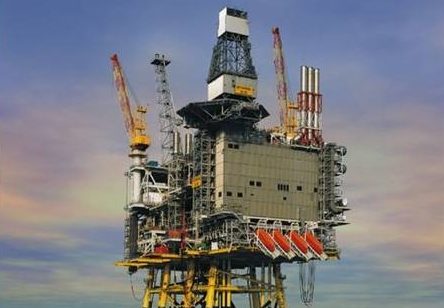
BP today celebrated first oil from its ‘stranded’ North Sea Arundel development.
The production milestone comes just 18 months after the project’s sanction. The Arundel field is located 15km north of BP’s Andrew platform in the central North Sea.
BP’s regional president Mark Thomas insisted the fast-track development highlighted the potential of rescuing similar stranded oil pockets located throughout the North Sea.
“Bringing such a challenging field safely online only 18 months after sanction is testament to the expertise and commitment of all those working on the project,” he said.
“Arundel is a great example of a field which could have easily been stranded but which we managed to maximise the economic recovery of through innovative working. I’m extremely proud of what has been achieved here.”
Arundel has an estimated five million recoverable barrels of oil. It’s currently producing 9,000 barrels of oil per day through the Andrew platform.
The Oil and Gas Authority estimates there is currently 350 stranded small reserves in the North Sea, totaling an additional three billion barrels of oil recoverables.
Brenda Wylie, the Oil and Gas Authority’s West of Shetland and Northern North Sea area manager, echoed Mr Thomas’sentiment.
“The successful first oil milestone from the Arundel Field is testament to BP’s determination and innovation in overcoming the technical hurdles to developing this field and is very positive news,” she said.
“It has unlocked the economic recovery of a smaller development with demonstration of good commercial and collaborative behaviours which are crucial to achieving MER UK. The OGA welcome projects such as this, delivered under new commercial models between operator and key service providers.”
It comes as the oil major confirmed it will have invested $1.8billion in the UK North Sea in 2017.
A BP spokeswoman added: “Beyond our current investment programme, our intent is to maintain capital investment at around $1billion per annum to sustain the production growth we will see over the next few years.”
BP’s UK North Sea production is expected to grow to around 200,000 boepd by 2020.
The Arundel field was discovered in 2000, with further appraisal wells drilled in 2008 and 2009. The project was sanctioned in April 2016 and the Field Development Plan approved in July 2016.
The development has a similar make-up to other Andrew satellite fields with a Palaeocene sandstone reservoir. However, the field was particularly challenging to access due to a very thin oil column and variable reservoir sand presence.
A BP spokeswoman added: “High density ocean bottom cable seismic data was acquired in 2013 to improve the view of the reservoir, however the well still presented significant subsurface risks due to poor rock quality, the presence of a thin oil column above an active aquifer, together with residual depth uncertainty.
“A single horizontal well was selected as the best development strategy, specifically designed to target the crest of the structure and the high-quality net pay encountered in the appraisal well. Tie in would be provided via the Kinnoull pipeline, which was routed over the Arundel field during the Andrew Area Development project to facilitate future development.”
BP devised a ‘fish-hook’ well trajectory where a 1,300m horizontal reservoir section was required.
There was only tolerance for a “very small margin of error in the placement of the well to achieve sufficient vertical distance from the oil water contact”, according to the firm.
Two subsea workscopes were required to connect the well to the existing Kinnoull pipeline, involving Subsea 7 vessels the Seven Pacific and the Seven Atlantic. The project also involved a commercial first for BP North Sea, with different equity groups – Kinnoull and Arundel – sharing a subsea flowline and agreeing a technical back out formula in the agreements to optimise production from both fields.
Recommended for you
